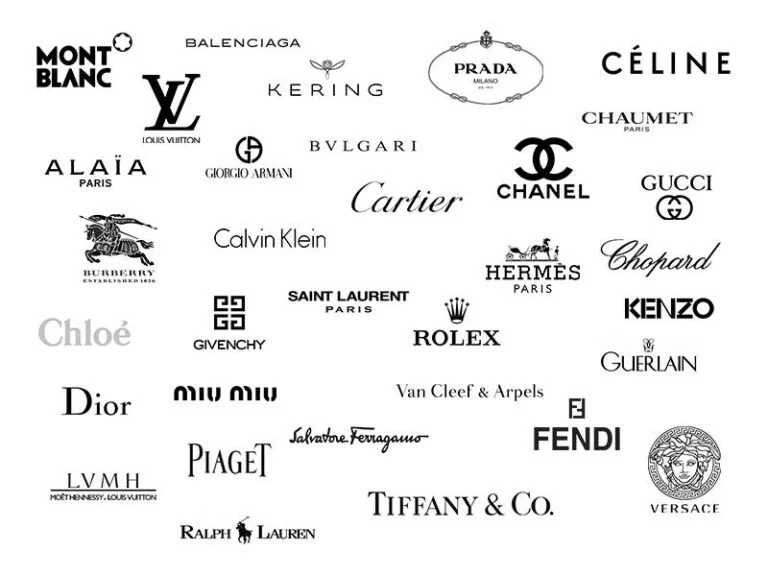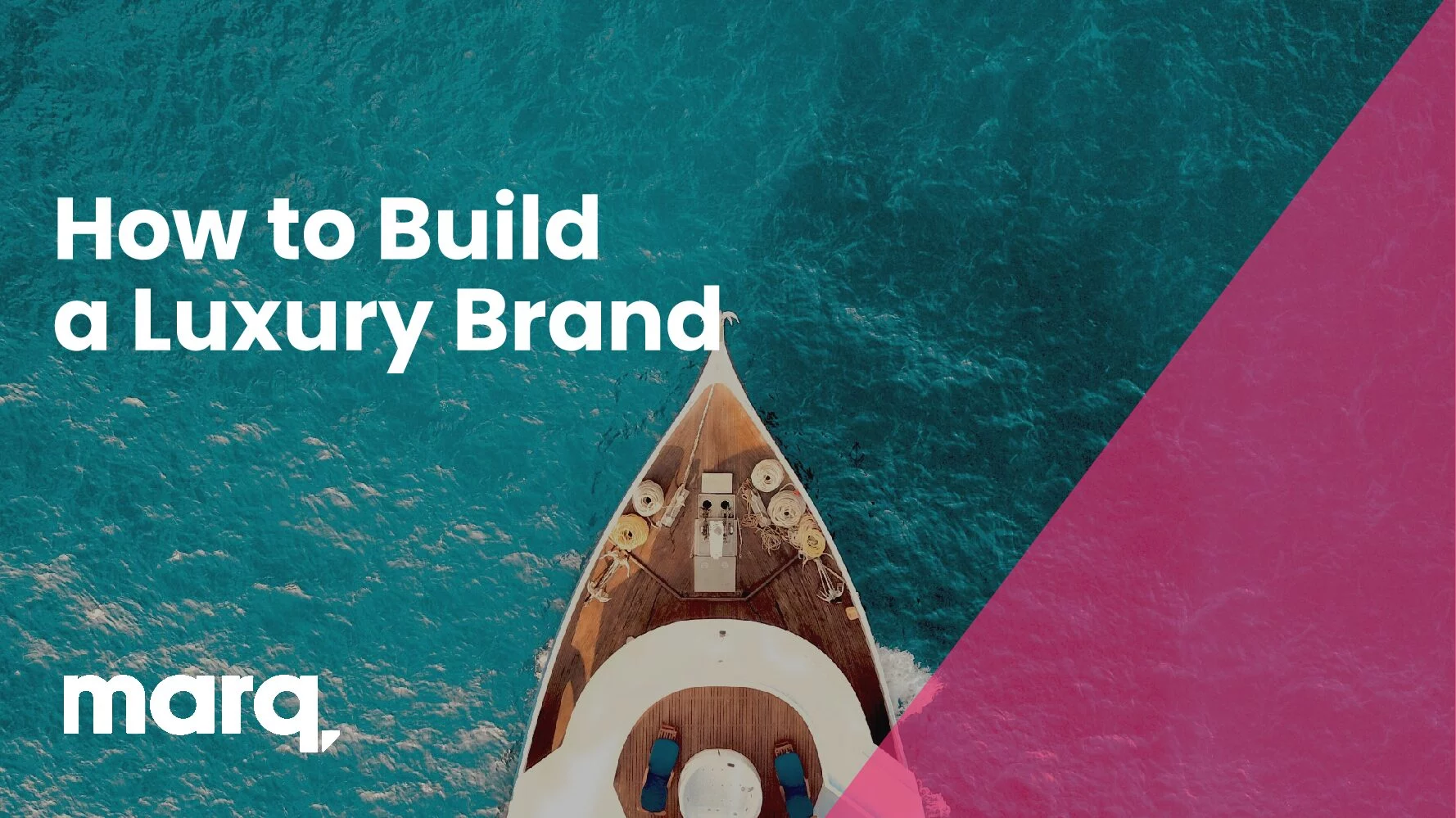According to Bain and Company, the luxury goods market is set to double in size from 2020 to 2030, reaching over $617 billion by 2030.
From watches to condos, business is booming. Even discount retailers like Target partner with designers like RHODE to attract customers shopping for high fashion at affordable prices.
But what does it take to build a luxury brand? What makes good luxury branding stand out? Here you’ll find everything you need to know about building a luxury brand from the ground up.
Let’s get started, shall we?
What is a luxury brand?
The definition of a luxury brand can change depending on the type of brand you’re describing.
In consumer goods, it’s Louis Vuitton and expensive couture fashion. In hospitality, bespoke travel experiences in exclusive or boutique locations would be considered luxury.

[Some of today’s most recognizeable luxury brands]
According to THAT Agency, five factors clearly define a luxury brand:
- Price
- Quality
- Design
- Meaning
- Rarity
- Service
Ultimately, consumer perception plays a huge role in elevating luxury brands above others. People associate luxury brands with higher prices, higher quality, rarity, and a sense of exclusivity.
Take Louis Vuitton, for example. Since 1854, the French brand has consistently worked to perfect their luxury brand. Today, they stand out for several reasons:

- The company invests in collaborations with a variety of artists, influencers, and celebrities without diluting the brand – like the above collab with Japanese artist Yayoi Kusama.
- Regardless of the artist collaboration or Creative Director at the helm, LV maintains a consistent brand identity.
- The parent company of Louis Vuitton, LVMH, also owns a slew of other luxury brands, giving them a ton of experience in the art of luxury branding.
How to build a luxury brand
Ready to learn how to build a luxury brand from scratch? We’ve got you covered.
The brand leadership experts at Martin Roll suggest a five-step framework to build a strong luxury brand:
Get specific about who you’re targeting.
There’s a niche audience out there that cares about your brand/product/mission. Figure out exactly who they are, and focus on one audience persona when you’re getting started. After your brand is well-established, broaden your definition of an ideal customer.
Do things differently.
Differentiation is a key focus for emerging brands. Narrow down what makes your luxury brand unique? Do you specialize in custom made, bespoke products or services? Are your items handmade? Highlighting what makes you unique is essential to standing out.
Become a status symbol.
Focus on how influencers in a specific niche are using your product or service. By creating the perception that only the most discerning buy into your brand, everyone in your target market will too.
Create exclusivity.
New luxury brands can tap into exclusivity by offering special perks to existing customers. High price tags and scarcity are other ways to employ this strategy. For example, Aston Martin combined a high price tag with scarcity when it created the Aston Martin One-77. The British car maker made a whopping total of 77 cars and sold them at $1.8M dollars each.
Consistently delivery on your brand promises
The bar for luxury brands is high. You’ll need to raise your game and keep your brand promises in every single customer interaction. Never compromise on your mission, purpose, and commitment to quality.
How to market your luxury brand
Once your luxury brand is established, it’s important to maintain a consistent brand identity through marketing.
Create a consistent brand from day one.
Start with a company style guide that gives your marketing team technical details about your brand’s look, including appropriate colors, fonts and styles. Keep in mind this is a living document that will evolve with your brand.
Make branded templates to protect brand identity.
Avoid a brand identity crisis by using brand management software like Marq. Create locked templates that keep logos from getting stretched and colors from being changed, no matter who’s working on your materials.
Engage in cause marketing and brand activism.
Cause marketing (aka brand activism) is a great way to get customers to connect to you on an emotional level. Consider your brand’s purpose and what it stands for. Are there any nonprofits or groups you can collaborate with or donate to to raise awareness?
Go all-in on SEO.
No matter how luxurious your brand is, no one will know about it if they can’t find it on Google. Invest in SEO strategies to increase visibility for your brand in the long-term.
Key takeaway
Building a strong luxury brand isn’t for the faint-hearted. With a detailed strategy and proper brand building techniques, you’re well on your way to becoming the next big thing on the luxury scene.
Need help keeping your luxury brand identity consistent? Marq has a template for that. Browse our brand template library here.



